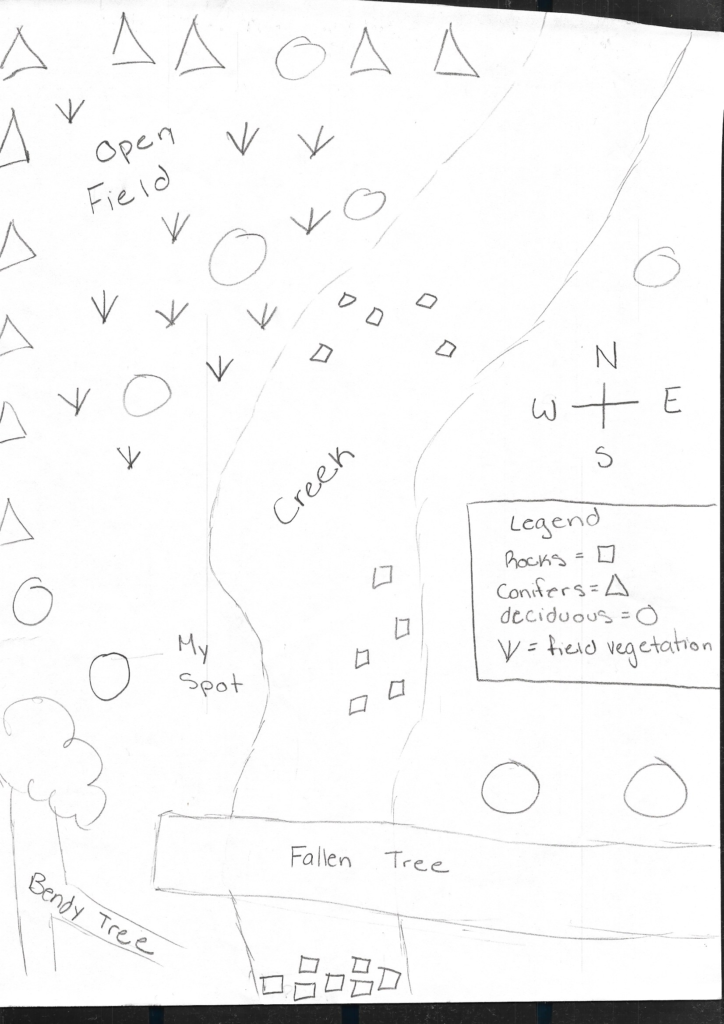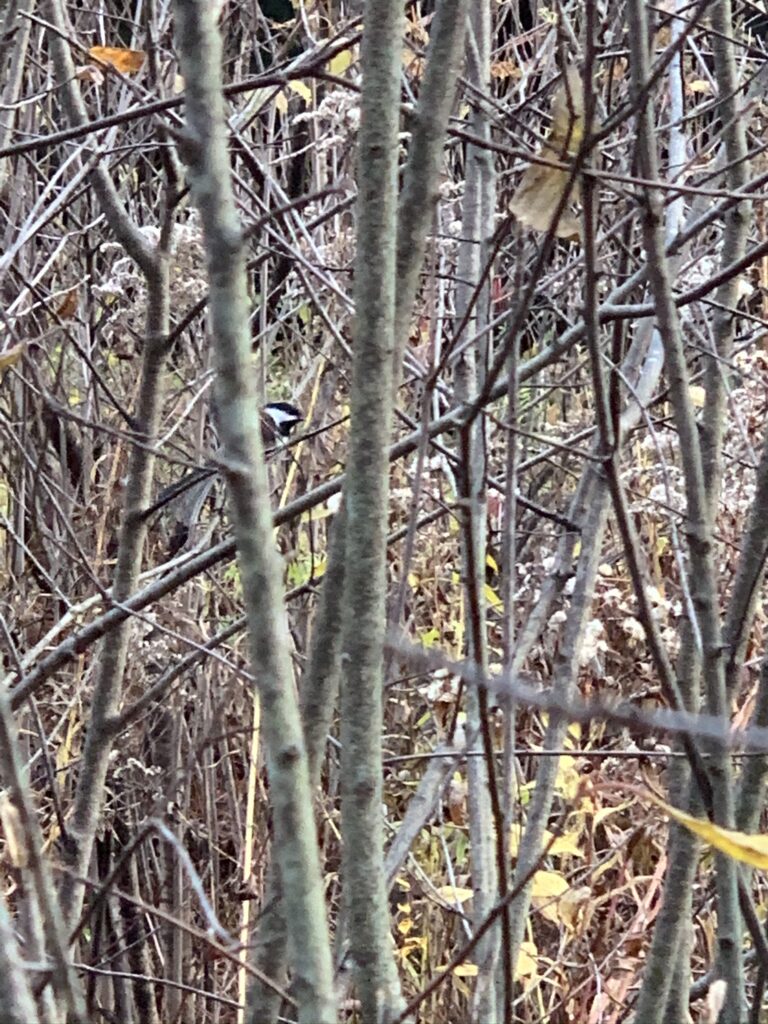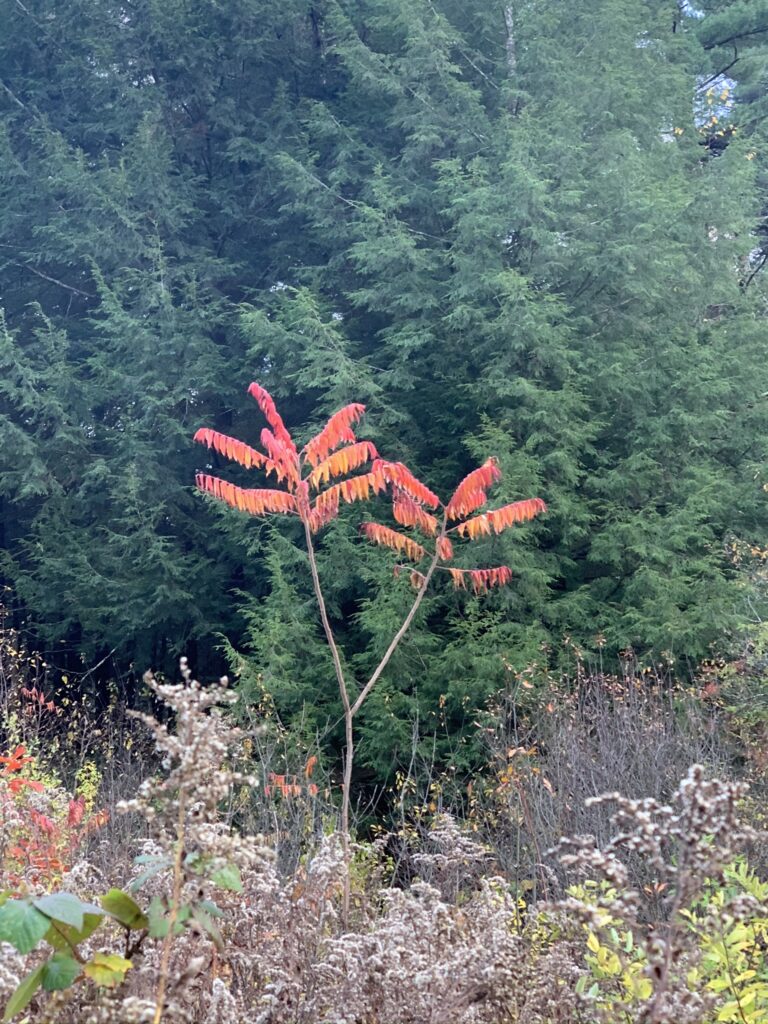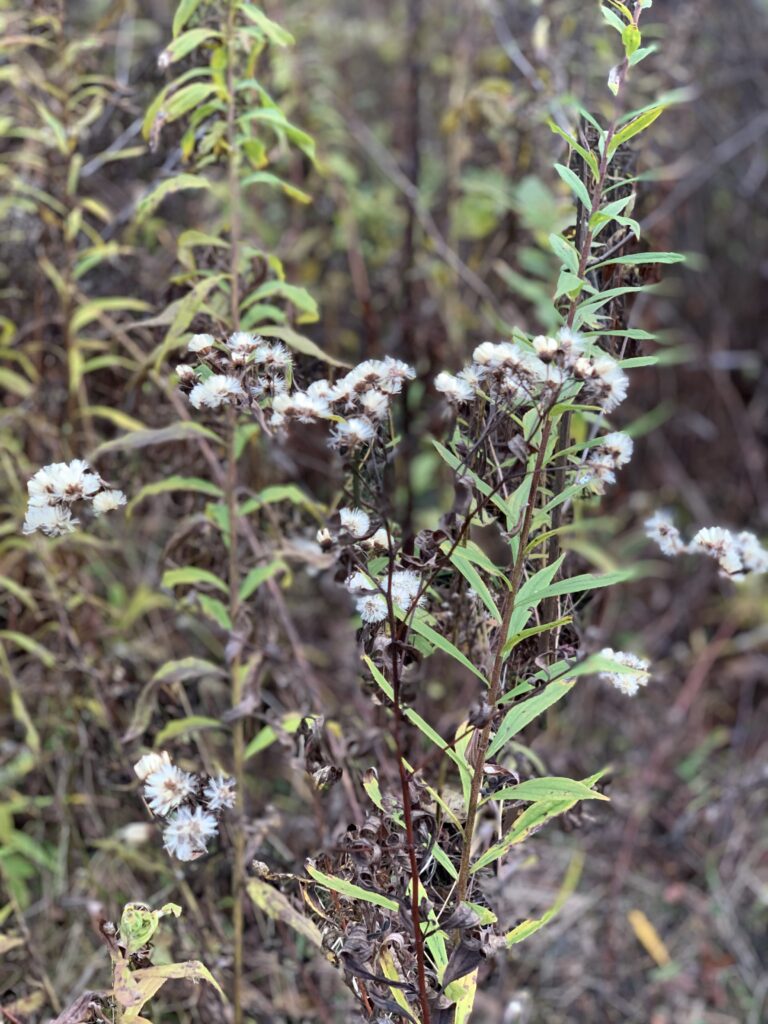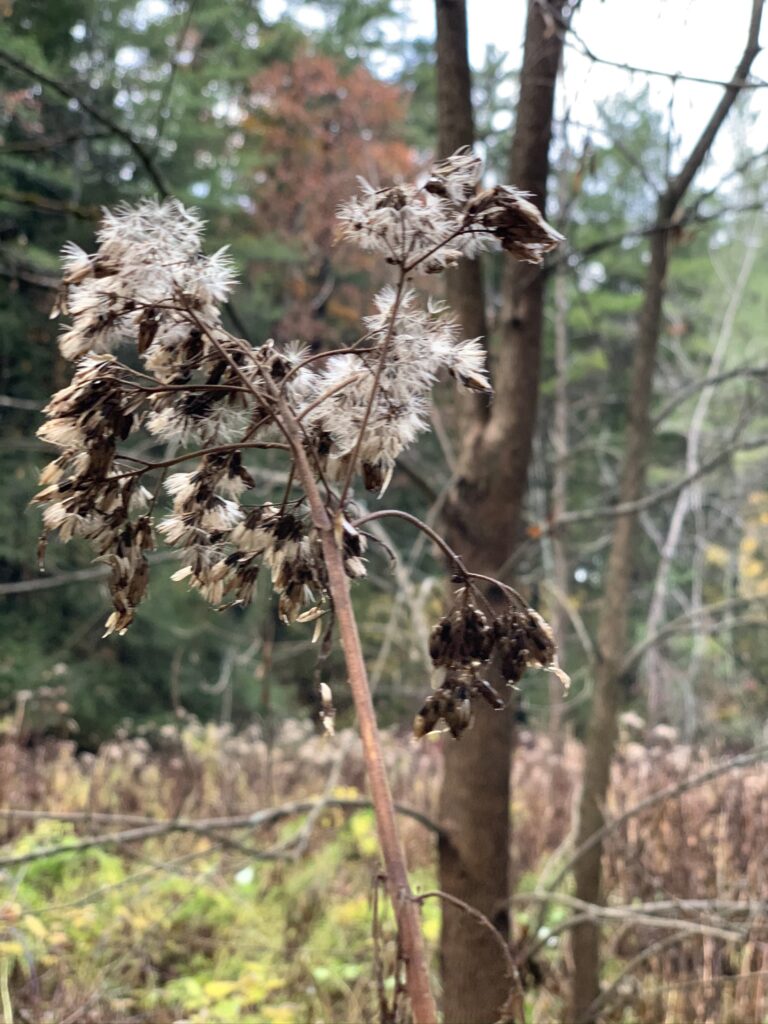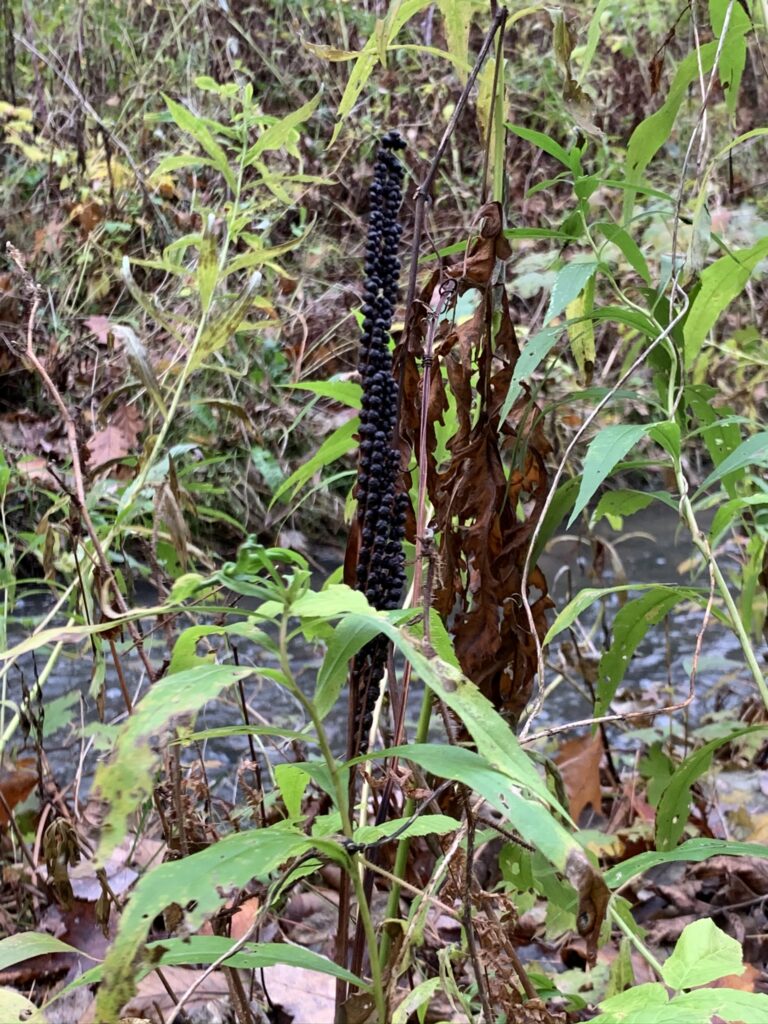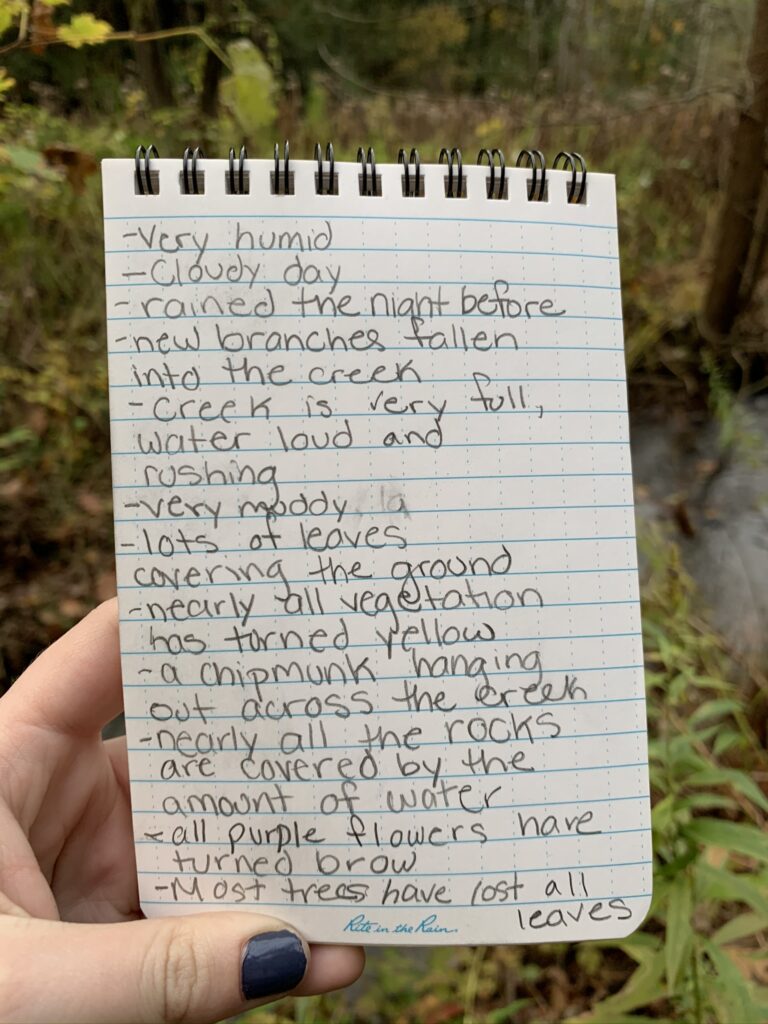Mapping and Charismatic Species
While visiting my spot in Centennial Woods, I noticed that there were still many birds singing in the trees. I identified one of them as the Black-Capped Chickadee (Poeicille atricapillus). Chickadees do not fly south for the winter because they rely are nuts from coniferous trees or they scavenge, which is why they have become so predominant in the area as it nears the colder season. A Staghorn Sumac (Rhus typhina) was very noticeable as it was the tallest plant and very colorful growing in the middle of a yellowing grass field. In the fall the sumac’s leaves turn a brilliant red which contrasts greatly to dark green color of the coniferous trees. In the field across from the creek grew Sweet Joe-Pye-Weed (Eutrochium purpureum). These plants stood tall in comparison to the majority of low growing vegetation. These plants were the previously mentioned purple flowers that covered the field, which now have turned brown with white soft seeds flowering at the end of the stem due to the change in seasons. A similar plant growing in the field was the Canada Goldenrod (Solidago canadensis). This plant normally has yellow flowers, also changes to have white soft seeds at the start of winter, but these are much more prominent and the branches are longer than that of the Sweet Joe-Pye-Weed. Growing low to the ground was a young Northern Red Oak (Quercus rubra) which had five large red leaves growing out of its very skinny trunk. It almost looked like it could topple over! The northern red oak is a very common tree in Centennial Woods and this is just one of many saplings across the reserve. One plant that really struck me while sitting in my spot was the Sensitive Fern (Onoclea sesibilis) which almost appeared like it had purple fruit or bead-like flowers all along it stem. Sensitive ferns enjoy wetlands and growing near water sources which is why many of them were growing along the sides of the creek. This is just one of the many plants that act as a filtration system to remove harmful bacteria from the water.
Despite only a weeks difference, so much has change in the surrounding area near my spot. It had rained the night before so the ground was very soft and muddy, which caused the sides of the creek to slope inward into the water. Multiple branches had fallen from the nearby trees into the creek causing the water flow to be more jagged and rushed. The previous rain had caused the water level to raise in the creek so nearly all the rocks were completely covered by the water. All the purple flowers that were there the previous weeks had wilted and turned brown. Nearly all of the trees have lost all their leaves so the ground was covered with red, orange, and brown leaves. Looking around the site there is almost no green left and all the vegetation has turned a brown-yellow as the woods prepare for winter.
Creating a map really showed me just how much an impact this spot has made on me. I was able to remember almost every detail of the place after only visiting there a couple times. It also really helped to be aware of where I was in comparison to other landmarks. Some places seemed really far away, but once placed on the map were clearly much closer than they seemed.
